How were firebacks made?
Around 1500, the first firebacks were cast. At first, this was done in a mould made in sand. The mould consisted of a sand bed in which loose objects such as a piece of rope, tools or utensils were pressed as decoration.
A bit later, these imprints were of, for example, a year, the Fleurs de Lis (French Lilies) and a crest. On Fireback 1, you can clearly see the edges of the stamps of the crest on the right and top left, as well as the stamp of Louis IX. Such firebacks produced with separate stamps in the sand are therefore always unique specimens, provided it is not a later reproduction.
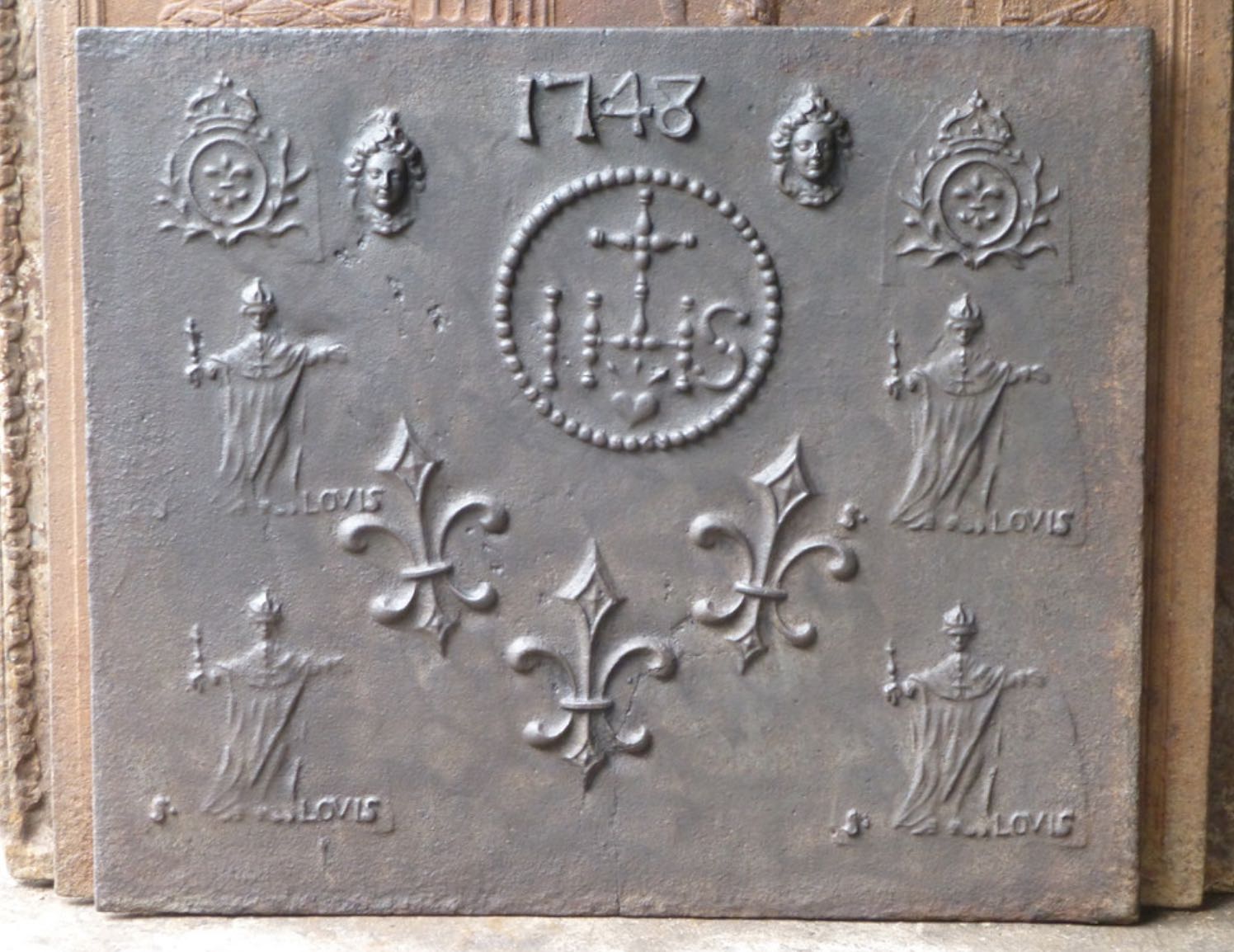
Fireback 1: produced with separate stamps in the sand
In addition, the mould could also consist of a plate completely cut out of wood that was pressed into the sand bed. Sometimes the plate consisted of a number of planks, so that you sometimes see horizontal or vertical stripes cast on old firebacks. The mould below produced a fireback with 2 horizontal stripes.
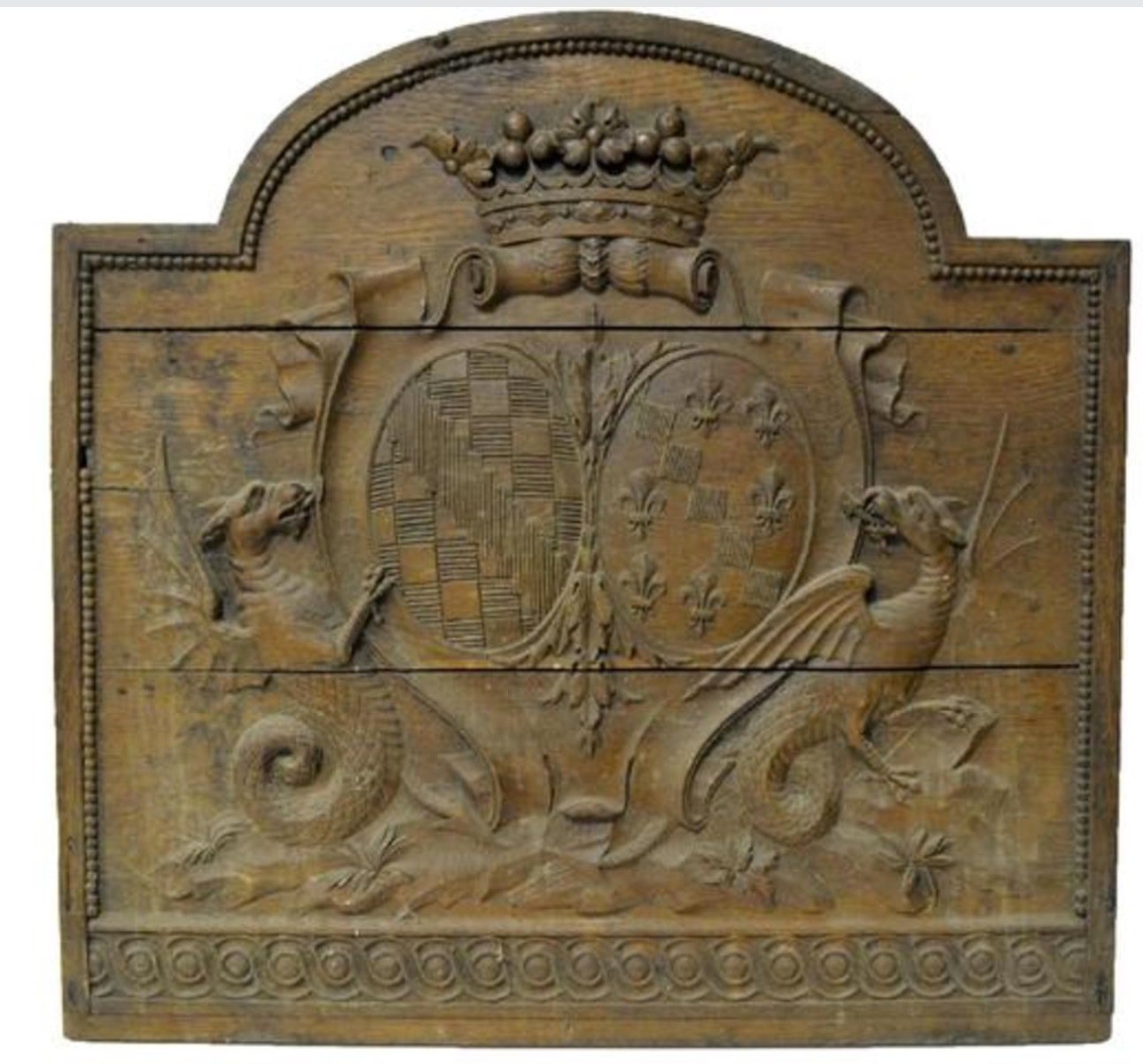
Wooden mould cut out of planks
Where were firebacks made?
The iron foundries were located in places where there was a lot of iron ore and a lot of wood. In France, this was mainly in the Northeast; in Germany, in the midwest, and in the United Kingdom, especially in The Wealden (Sussex). Iron foundries later developed on the basis of imported iron ore, such as in the Netherlands, but to a lesser extent. By far the most firebacks come from France. They were also used there the most and the longest because France, compared to other countries, switched much later to other forms of heating than the fireplace.
Gothic motifs
The oldest firebacks are Gothic firebacks with mostly primitive forms of religious motifs and crests cast into them. Fireback 2 is an example of this.
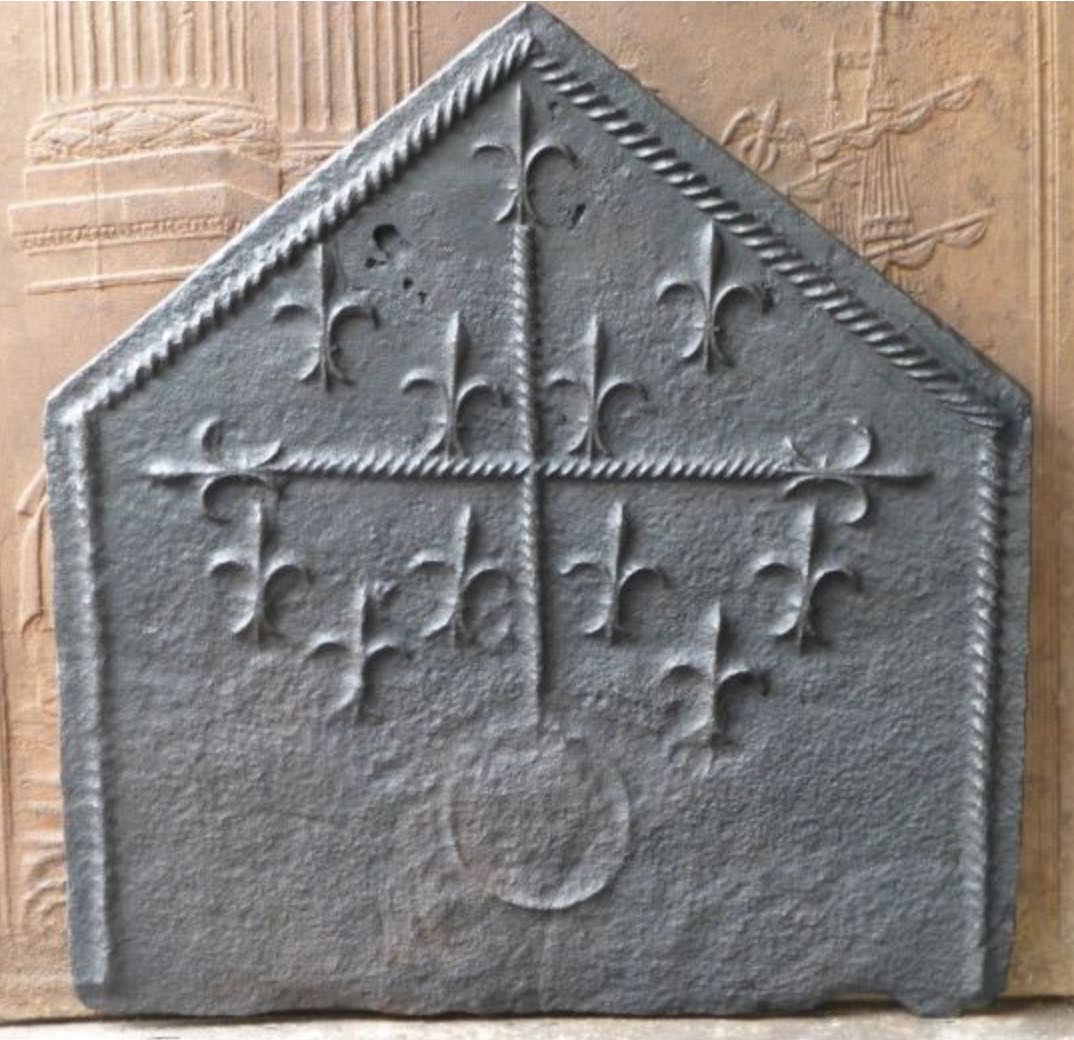
Fireback 2: Gothic Fireback
Fireback 2 (16th century) has a cross and symbols for the Holy Trinity, which are probably the forerunners of the Fleurs de Lis. The edge around the fireback and the cross are casts of rope pressed into the sand bed. The other shapes are pressed into the sand with loose stamps.
In Germany, many religious firebacks were cast in the Gothic period based on detailed carved wooden moulds. An example is Fireback 3 with Adam and Eve surrounded by Latin texts.
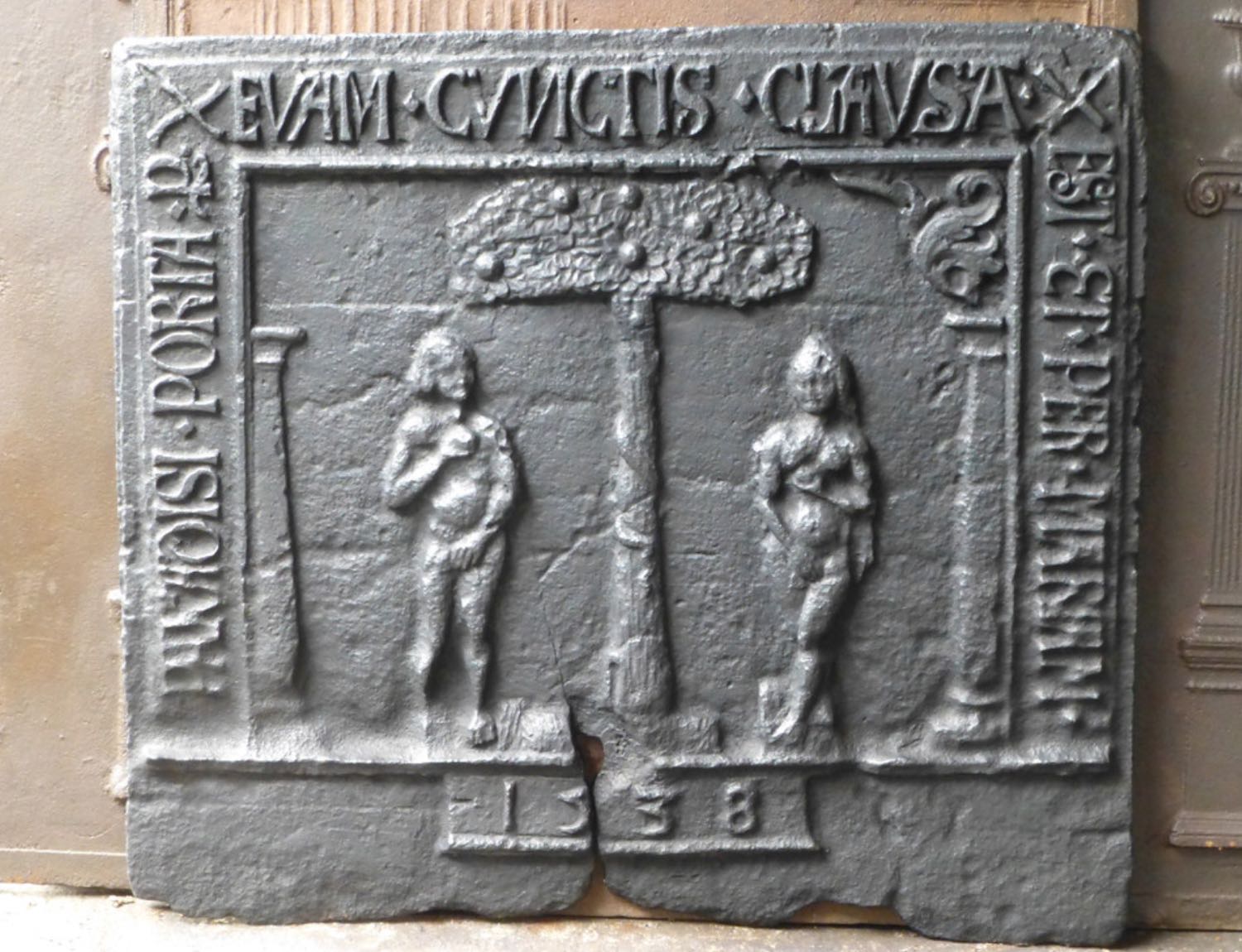
Fireback 3: Adam and Eve Fireback
Coat of arms firebacks
From the 17th century, there was a much larger variety of firebacks, especially with coats of arms.
Various versions of firebacks came from the house of Bourbon, which reigned in France from 1589 until the French Revolution and for short periods thereafter. A well-known example is Fireback 4.
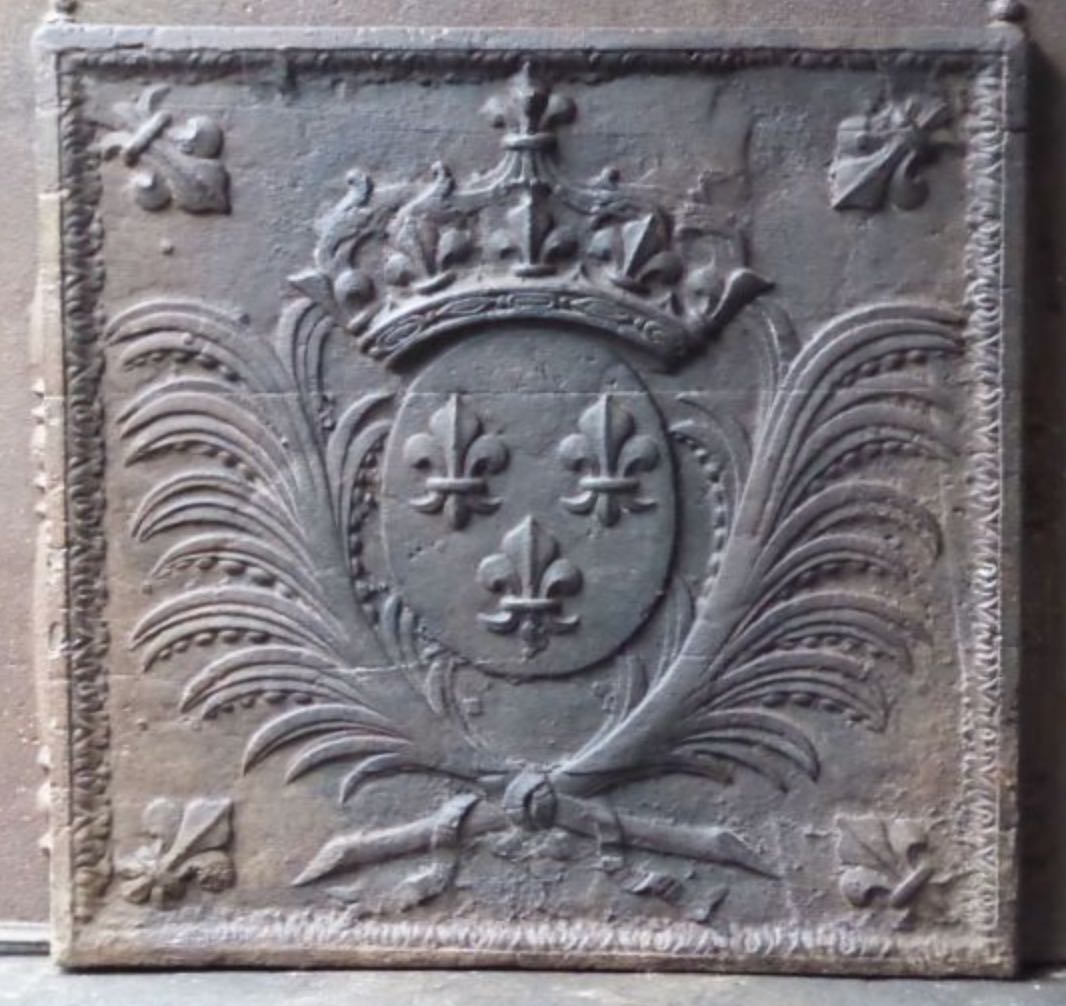
Fireback 4: Arms of France Fireback
Fireback 4 represents the royal family of Bourbon and is called the Crest of France. It consists of the French royal coat of arms with the three Fleurs de Lis and an open crown, often surrounded by palm branches (for victory) or olive branches (for peace) or laurel branches (for victory).
But also common in those days were firebacks from the Duchy of Lorraine (Fireback 5).
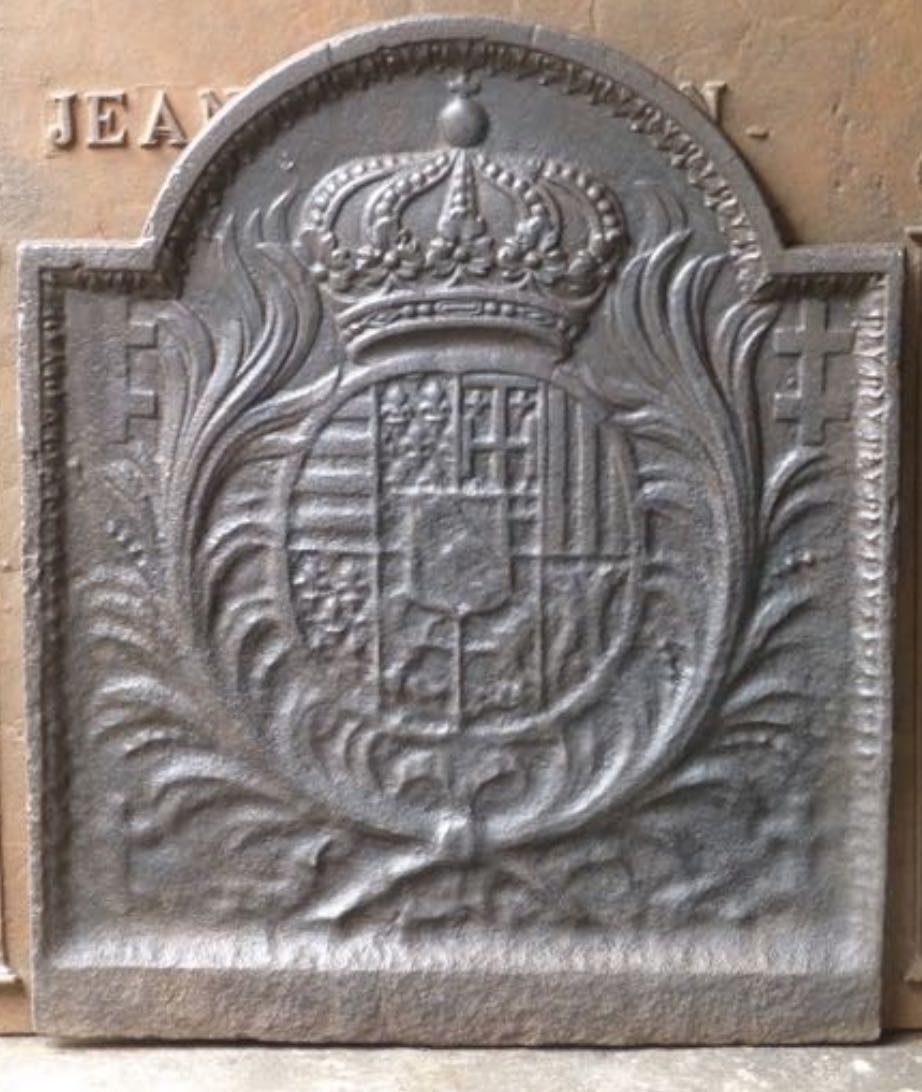
Fireback 5: Arms of Lorraine Fireback
The coats of arms firebacks from this time often had motifs that have to do with one of the French royal houses or motifs that represent the crests and symbols of noble families. These can be all kinds of figures such as animals, crowns, roses and the Fleur de Lis. The most common symbol is the Fleur de Lis. These coats of arms firebacks were usually cut entirely into the wood.
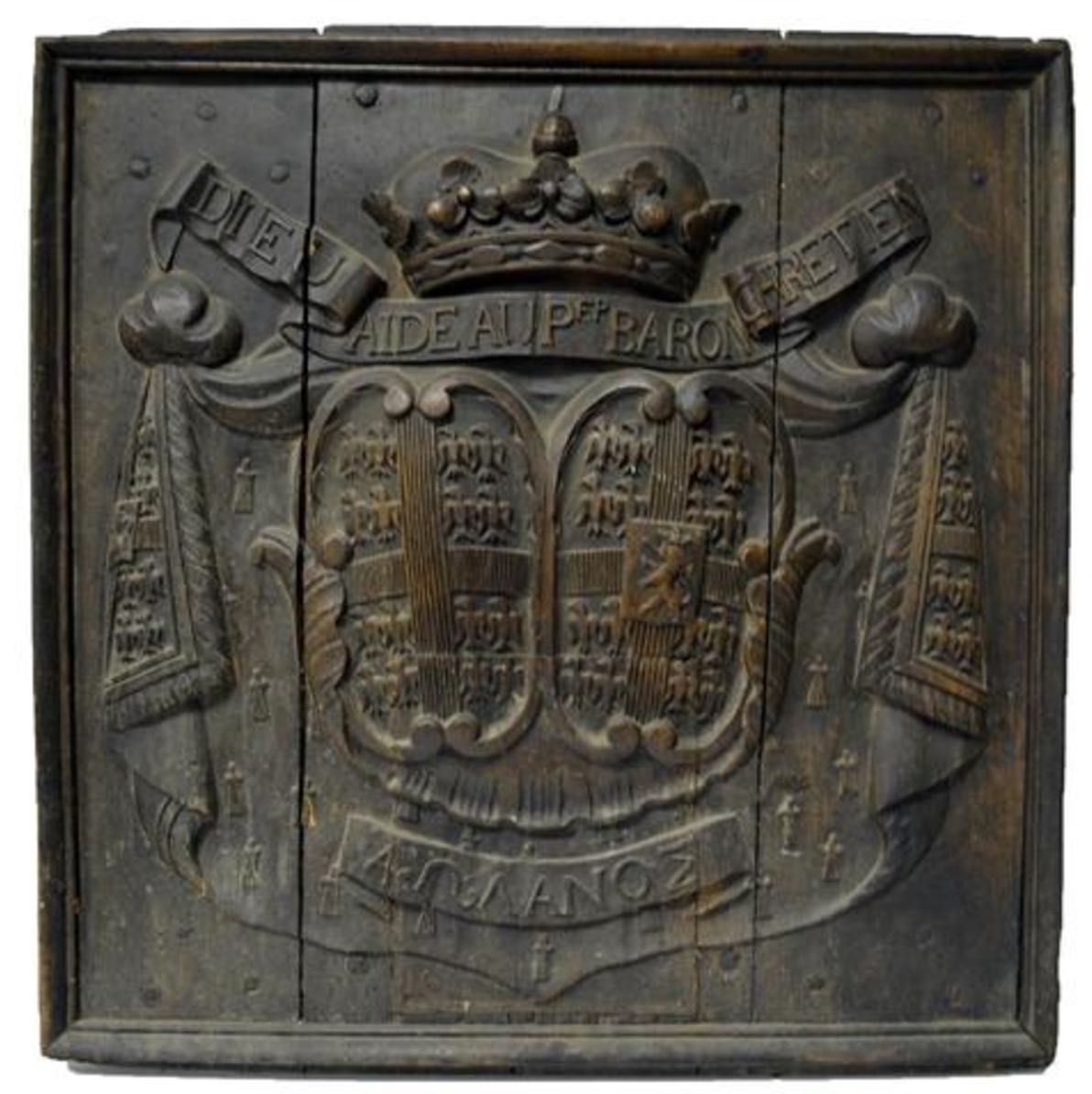
Wooden mould for a coat of arms fireback
Influence of politics and religion on firebacks
In this period, the first firebacks were created for the bourgeoisie, with, for example, allegories of the (Christian) virtues and of peace.
On the Fireback 6 from the 17th century, The Hope is depicted, from the trilogy Faith, Hope and Love. There is a fireback for each.
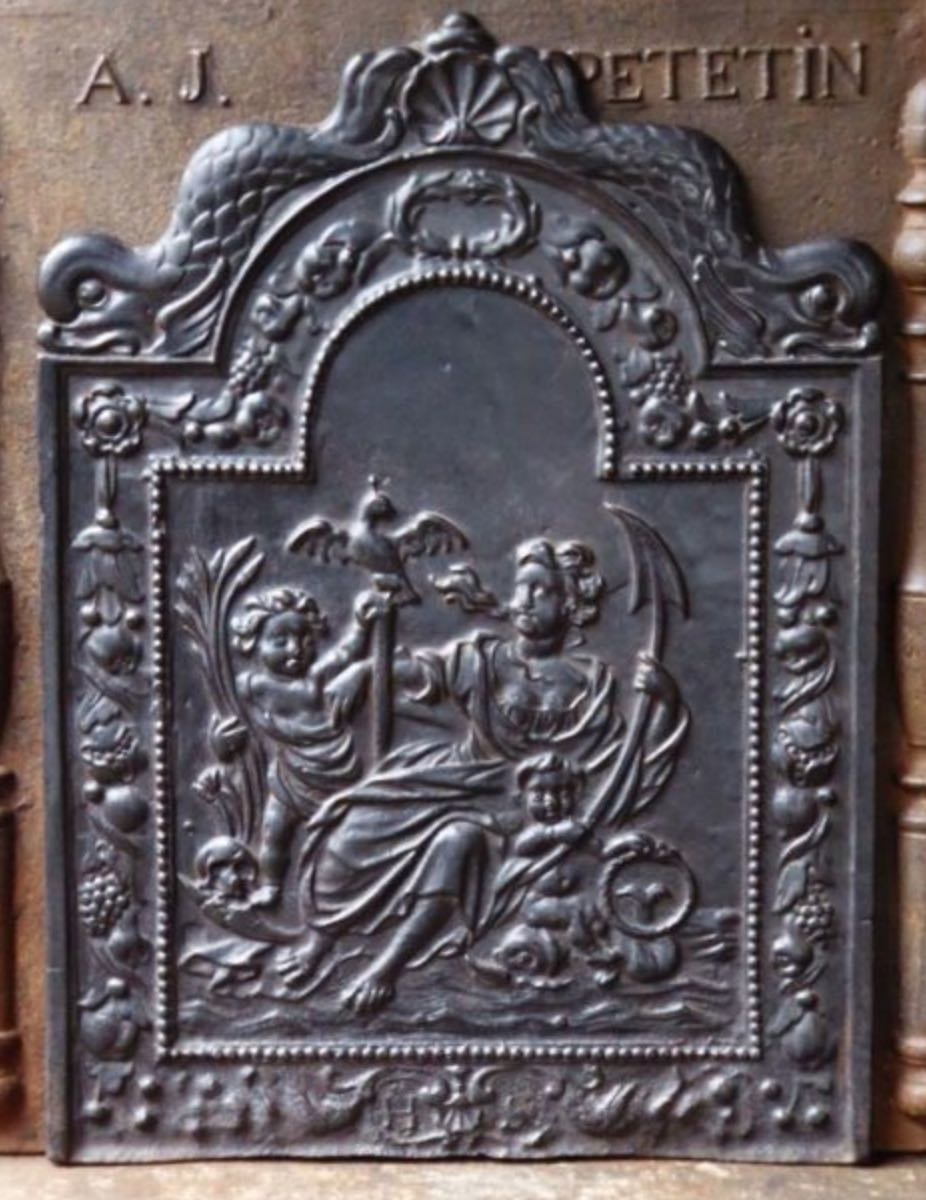
Fireback 6: The Hope Fireback
Furthermore, the first political firebacks were also cast during this period. You saw that especially in the Netherlands, where the young Republic or the Peace of Munster was depicted on firebacks. A famous example is the Pro Patria fireback (Fireback 7).
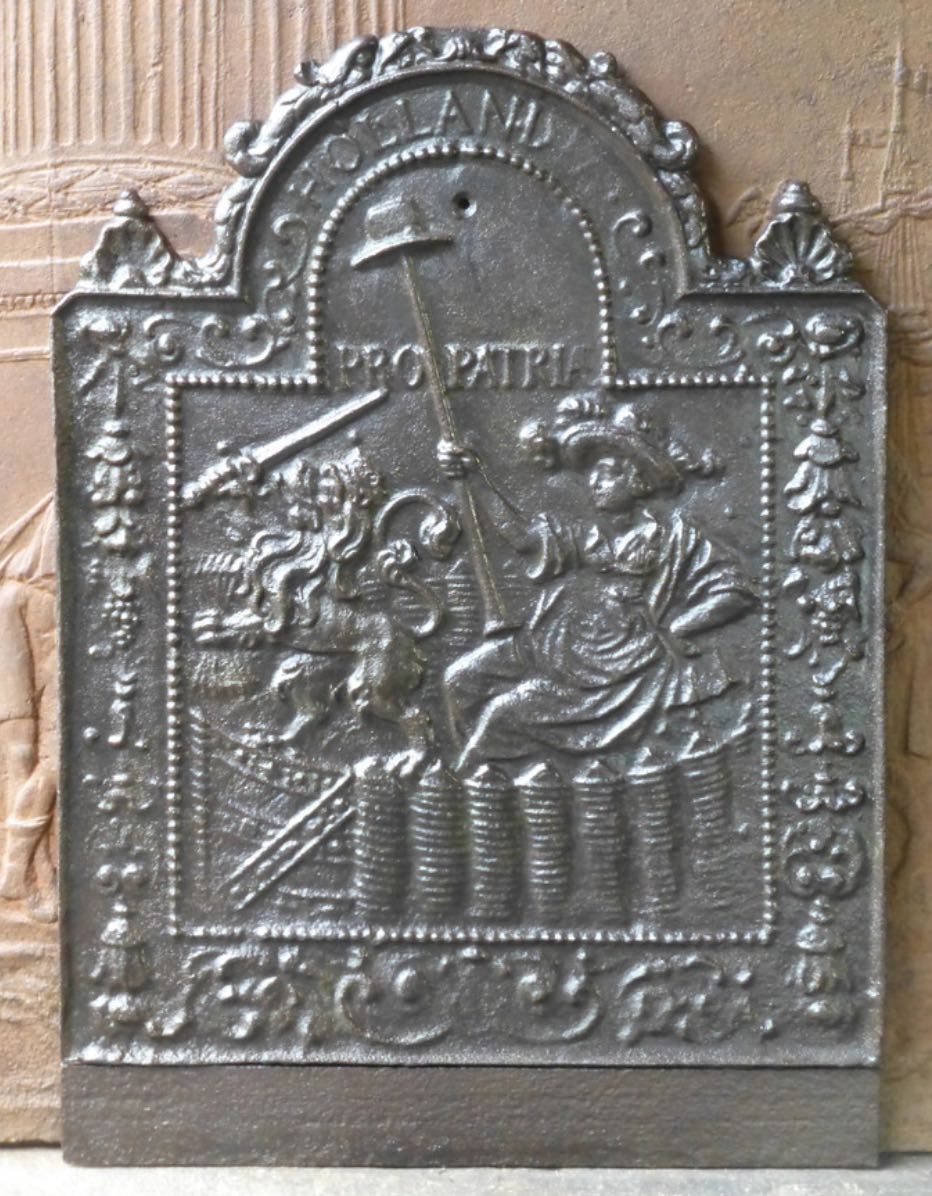
Fireback 7: Pro Patria Fireback
Another political fireback is what is called the 'Seul Contre Tous', which symbolized Louis XIV of France in 1672 fighting a war on his own against the surrounding countries (Fireback 8).
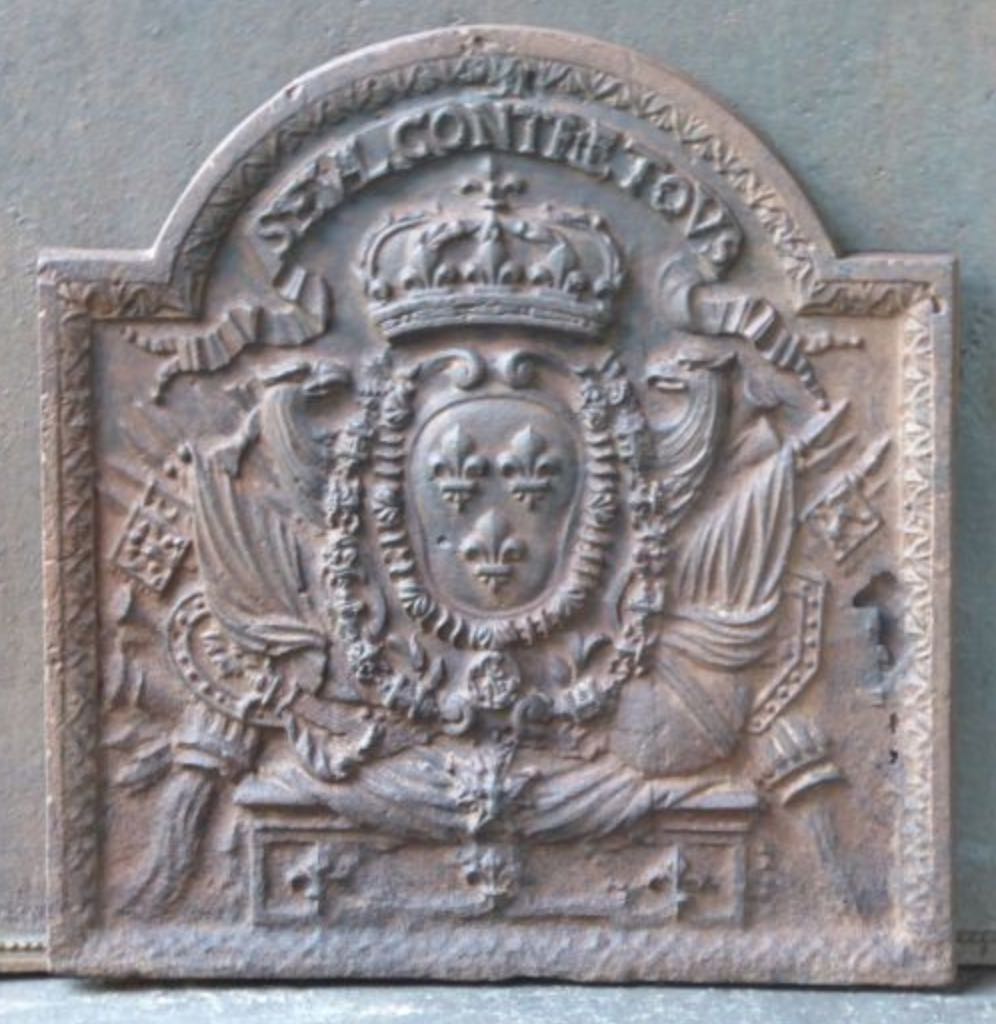
Fireback 8: Seul Contre Tous Fireback
In the 17th century, the first firebacks with the two pillars of Hercules were also produced (Fireback 9). The pillars stand for strength and for the transition from the known to the unknown. The pillars are often depicted on firebacks, often in combination with other motifs.
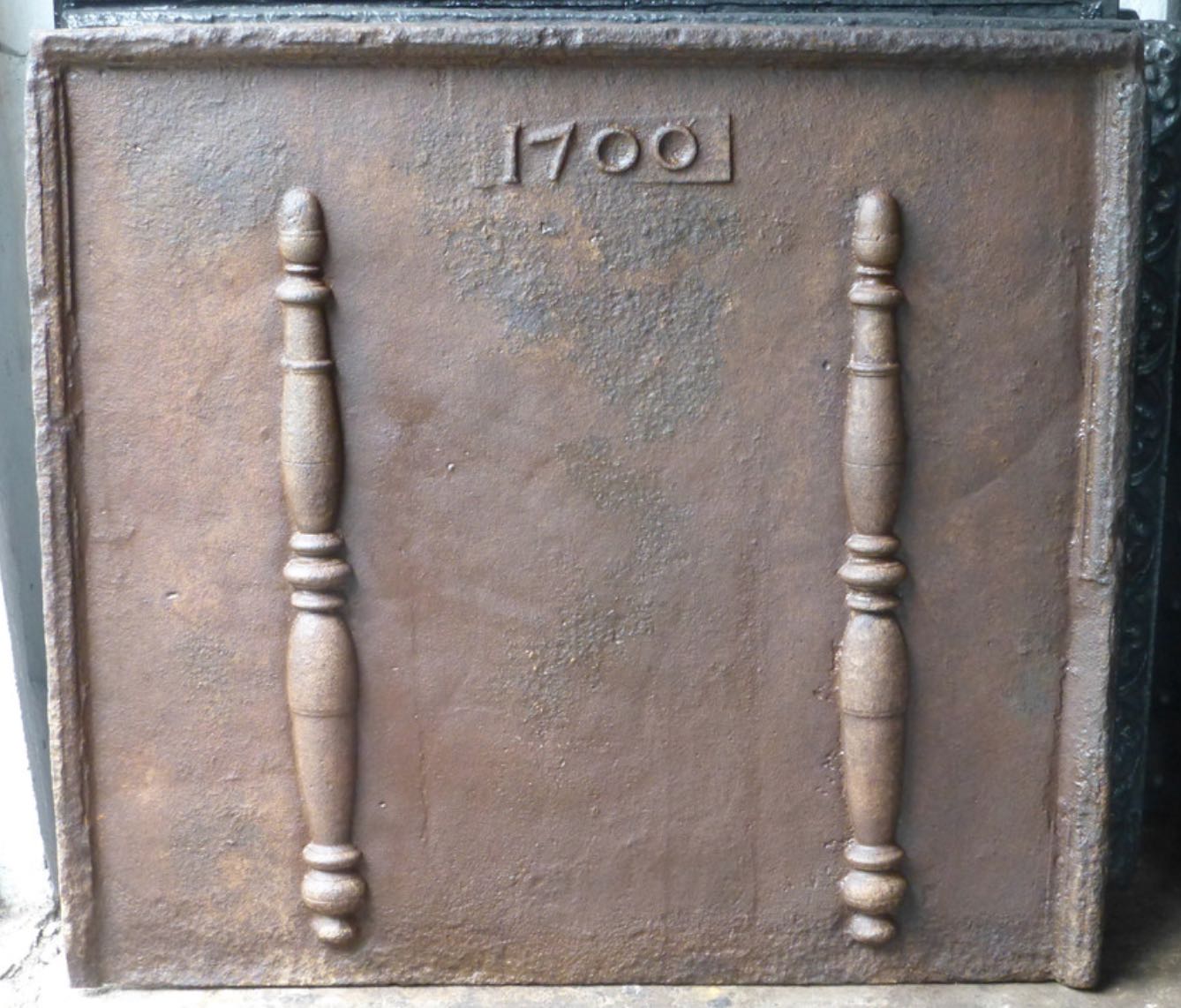
Fireback 9: Pillars of Hercules Fireback
Influence of the French revolution on firebacks
During the French Revolution, which began in 1789, royal and noble coats of arms fell out of favour. In October 1793, the National Convention decided that firebacks with feudal emblems (including the royal emblems) had to be destroyed within eight days, under threat of the guillotine for the owner. Immediate mass destruction of these firebacks proved impossible because of the symbolic value of the firebacks for their owners and because the heavy plates were often firmly anchored in the stone of the chimney wall. It was therefore decided four days later that firebacks with three or more French lilies had to be turned around to hide the emblems. These firebacks would later be melted down by Republican smiths to make firebacks with more appropriate, democratic emblems. Some people who did not comply were imprisoned and even sentenced to death.
Not only were coats of arms the targets of the revolutionaries, but the feudal emblems also had to be removed from chimneys, tombstones and other stone monuments and objects. Many coats of arms firebacks were destroyed and melted down during that time, but many other firebacks kept serving in the fireplace, simply turned around, and the feudal emblems (often the Fleur de Lis and sometimes the crown) were cut off of other firebacks. We regularly find firebacks with these cut-off symbols. Fireback 10 is an example of this.
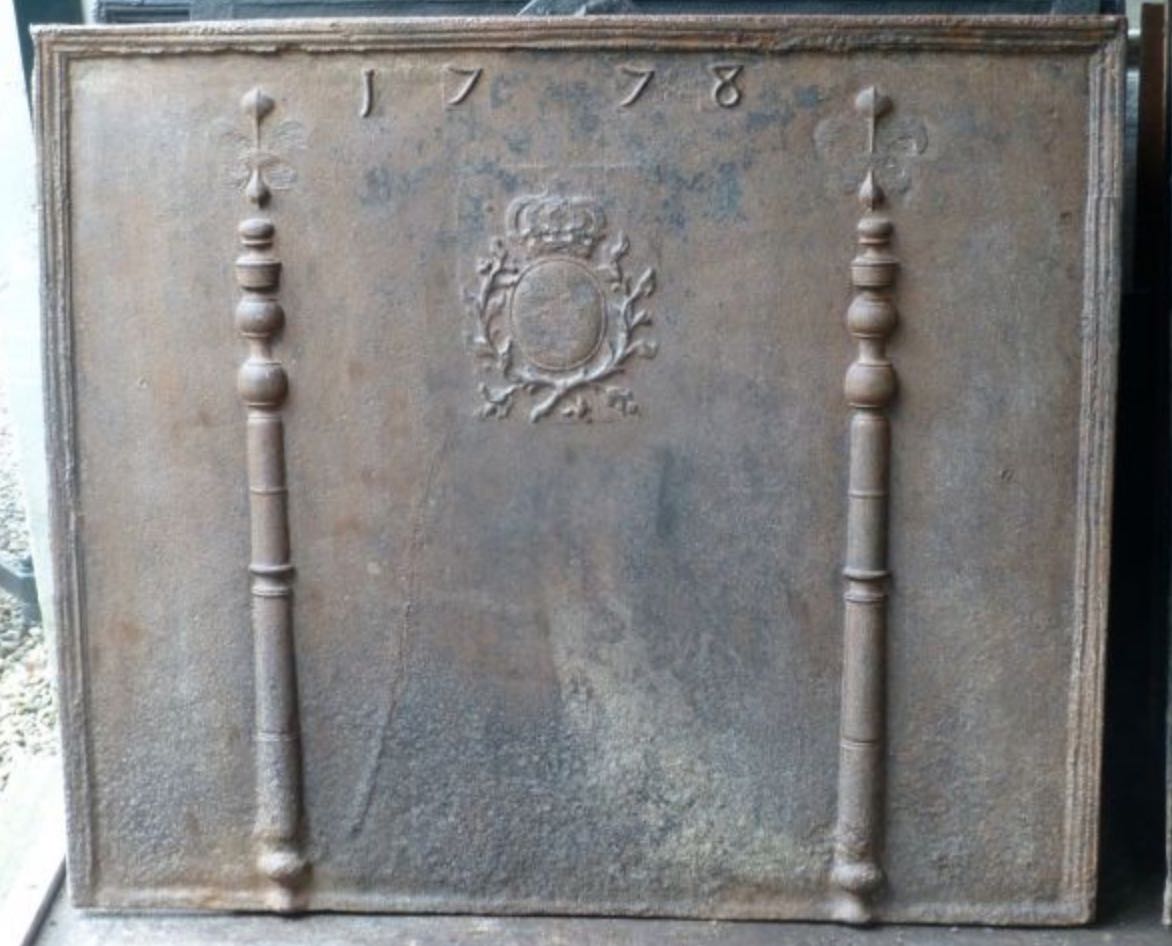
Fireback 10: Fireback with cut-off feudal symbols
Fireback 10 is a fireback from 1778 with the pillars of Hercules and the coat of arms of France. The Fleurs de Lis on the pillars are partially cut off.
During the French revolution, new firebacks were cast with appropriate revolutionary motifs. Fireback 11 is a revolutionary fireback with the Phrygian cap as a national symbol of France. The Phrygian cap was originally the symbol of the liberated slave in the Roman Empire and became the headdress of Marianne. She symbolizes the 'Triumph of the Republic', Freedom, and Reason. Other revolutionary firebacks, for example, show a 'sans-cullotte' (or someone without the bourgeois silk breeches) with a Phrygian cap.
The two pillars, now in Neoclassical style, no longer symbolize the pillars of Hercules but Freedom (La Liberté), one of the three values of the French Revolution. Firebacks with these pillars were frequently cast during and after the Revolution, often with a name of the owner in combination with the year in which the fireback was cast. You also see many marriage firebacks with the names of the couple and the year of the marriage, which is also the year in which the plate was cast.
Firebacks 10 and 11 also show the difference between the craftsmanship of firebacks from before the French Revolution and after. Firebacks from before the French Revolution are more richly decorated and less flat. This also has to do with the difference in styles that were fashionable in those times: the more decorative Gothic and Baroque styles from before the French Revolution versus the subdued Neoclassical style from just before the French Revolution until afterwards.
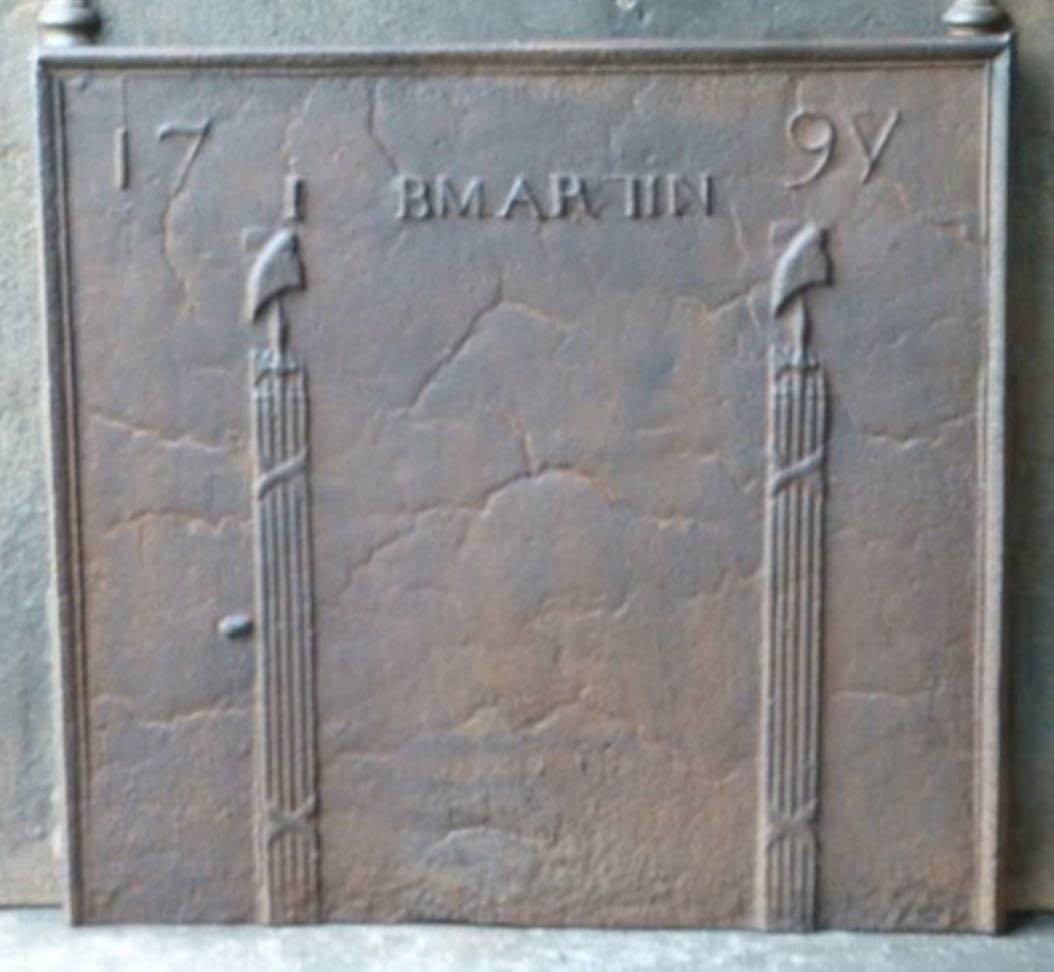
Fireback 11: Fireback with the Phrygian cap
Later, in the places where the crest or a Fleur de Lis used to be seen, more neutral, cheerful elements were cast, as can be seen in the Fireback 12.
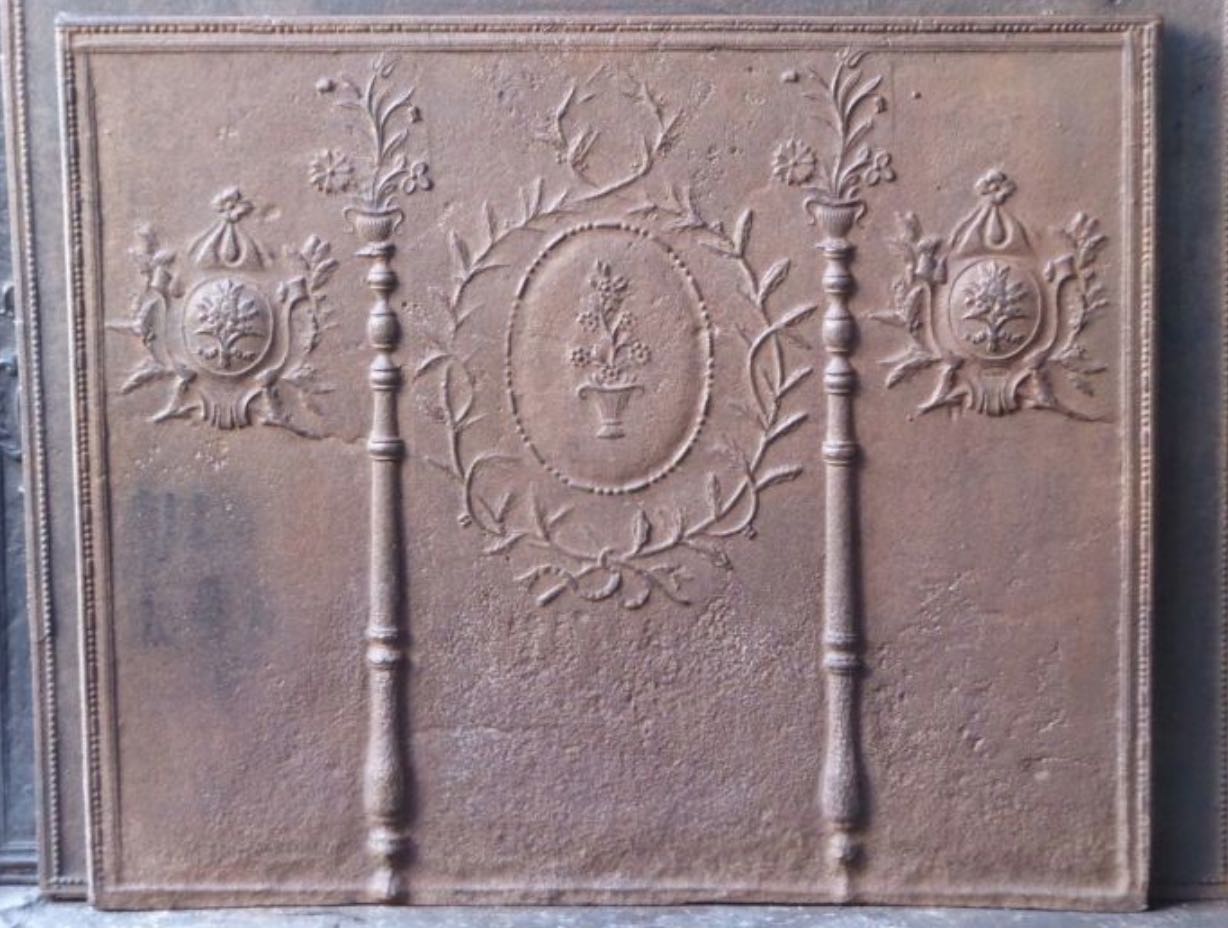
Fireback 12: Neoclassical Fireback
Firebacks and style periods
Fireplaces followed the styles in architecture and furniture that applied in certain periods. Another description of the history of the firebacks is possible by looking at the sequence of these styles. This is covered in the following article: Styles and firebacks
Restoring old firebacks
From the beginning of the 20th century, the firebacks with coats of arms motifs, which had been turned around, were rediscovered. The old coats of arms firebacks were again valued for their beauty and craftsmanship. These firebacks are now seen as part of the French heritage of which everyone is owner and no longer as a display of power of a privileged group, the French nobility. The Fleur de Lis is now even an (unofficial) symbol for the French Republic.
Reproductions of coats of arms firebacks
From the beginning of the 20th century, firebacks with coats of arms motifs were again cast following an age-old model. These plates are now available, although the difference in sharpness of the cast and the charm of the old firebacks is often great. The real old firebacks with coats of arms motifs remain scarce.
Sources
- Henri Carpentier (Histoire des plaques de cheminées), 1926
- Jeremy Hodgkinson (British Cast-Iron Firebacks), 2008
- Philippe Palasi (Plaques de Cheminées Héraldiques), 2014
- David Bennett (Plaques de cheminée, the French Revolution and the Politics of Iconoclasm), 2015
- Karlheinz von den Driesch (Handbuch der Ofen-, Kamin- und Takenplatten im Rheinland), 1990
Browse our webshop
Learn more
Everything you need to know to choose a fireback
Which size of fireback fits in my open fireplace?
Tips about the use of a fireplace fireback
How to install a fireback backsplash above a stove?
What to do about a fireback with a crack?
How do I ensure that my fireplace burns hot?
How do I decorate my fireplace?
How do I decorate my unused fireplace like a real fireplace?
How do I protect the wall behind my wood-burning stove?
Nice gift ideas for fireplace lovers
